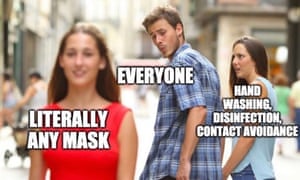
- <Knocking on Northern California redwood> It seems like right now we're in about the best place in the country to be for the COVID-19 (coronavirus) pandemic. So far, it looks like our region started social distancing early enough to have an effect on the speed of transmission of the virus. New numbers keep coming out every week and it's tough to keep track of what they all mean, especially as it's tough to get good data on things right now given how it's an evolving situation. It's seeming more and more like a good chunk of people who get COVID-19 (coronavirus) have no symptoms, hearing something in the area of 25-50% of people. So I guess that's good news, but it can also give you a false sense of security as to whether or not you are safe to be around others.
- We don't know how many adults out there are asymptomatic with the virus right now and we also don't really know how easily they can spread it. It does spread much more readily in people who are sick and have all this mucus flinging about. This gets to the idea of masks and you may hear more on this soon because there might be a shift to recommending wearing masks when out in public (CDC and WHO haven't changed their stance, yet). Currently it's just been for people who are feeling sick or in close contact (caregiver or family) of someone who is sick because we know that's a big risk for transmission. But if it's spreading more easily than we thought, the more widespread use of masks may be helpful.
- But we have to balance that with the idea that we still need to save masks for all the front-line people working with those sick with COVID-19 (coronavirus). Personal protective equipment shortages are being talked about all over, most significantly in the hot spots like New York and we don't want that to be the limiting factor as to whether healthcare workers feel safe treating people with the virus. Personally, I still think the main benefit of wearing a mask in your day-to-day activities is just to keep you from touching your mouth/nose/eyes as that kind of contact is probably the biggest cause of most transmissions.
- As a response to the idea of sanitizing every food product you get, I think it's overkill. I used to have the same issues with a lot of things - ties, white coats, phones - things I touch every day at work which you could call a fomite (objects or materials which are likely to carry infection, such as clothes, utensils, and furniture). But the data looking at a lot of those is that it's not so much the thing that's the problem so much as touching the thing and then touching something else without sanitizing. Regular hand-washing shows a consistent benefit every time they look at how to keep disease from spreading. But it's a tough habit to change, so if wearing a mask helps to keep you from biting your nails or picking your nose or scratching your eyes, it might be worthwhile.
- In other news, you'll probably be seeing this soon if you haven't already, but it's time to stop using Zantac (ranitidine) - The FDA is recalling it. If you take it already, you should look for an alternative like Pepcid (famotidine) and also work on the non-medicinal aspects recommended by the gastroenterologists - losing weight, elevating the head of your bed and avoiding meals within 2-3 hours of going to sleep, avoiding trigger foods (chocolate, caffeine, alcohol, acidic/spicy foods, citrus, tomatoes). I've talked about this before if you're in the mood for a "good" read.
- Finally, just know that I'm here and finally have an excuse to wear my favorite mask but if that doesn't fit the bill, I still have this homemade one.